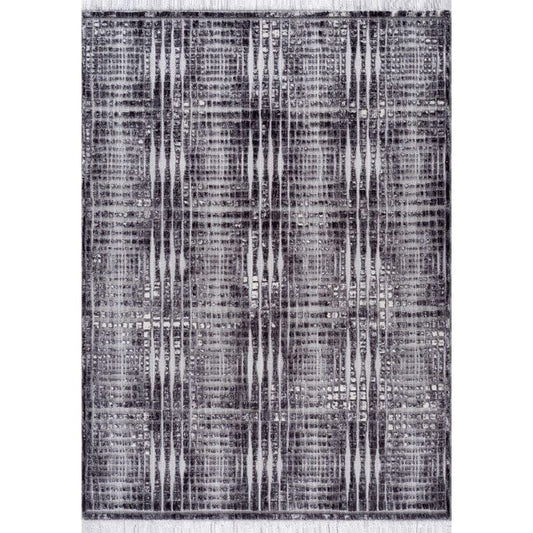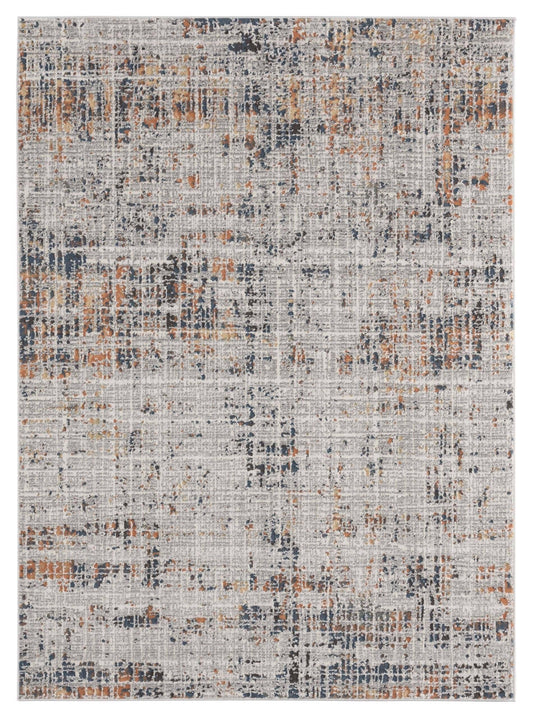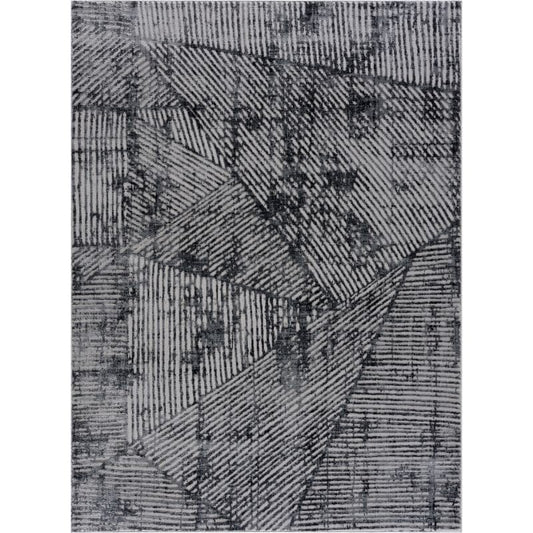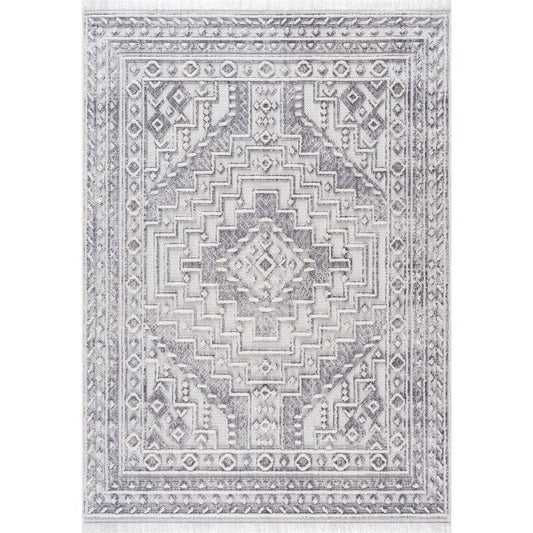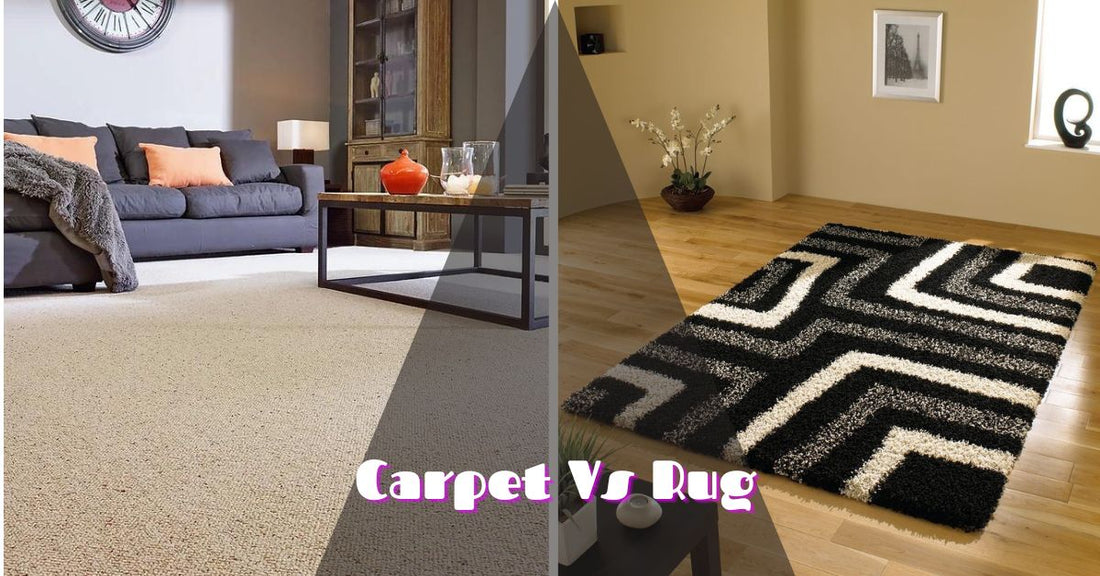Choosing flooring is crucial in enhancing the aesthetics and comfort of your home or office. Among the various options available, the carpet vs rug dilemma arises as people seek the perfect floor covering for their space.
It might be difficult to choose the best option given the abundance of choices. Don’t worry; we’ve got you covered.
We'll explain the differences between rugs and carpets, the benefits and drawbacks of each, and help you decide which is the best option for your area in our comprehensive guide. By the end, you’ll be well on your way to softer, warmer floors.
Let’s get started!
Defining the Terms: Carpet and Rug
Let's start our guide to carpet vs rug by defining these terms individually to understand their characteristics better.
Carpet
A carpet is a large, wall-to-wall floor covering typically installed over an entire room. It is often attached to the floor using adhesive or tack strips and is constructed of woven fibers like wool, nylon, or polyester. Carpets are available in various designs, colors, and textures, providing a seamless and unified look to a space.
Rug
In contrast, a rug is a smaller floor covering that is not permanently affixed to the floor. Rugs are available in various sizes, ranging from modest area rugs to huge room-sized carpets. They are typically made from the same materials as carpets and feature diverse patterns and textures. Rugs may be moved and rearranged to fit different areas of your home or business since they are portable.
Are you looking for a high-quality rug at an affordable price? You’ll be glad to hear that we at Rug Gallery offer a wide variety of rugs made of premium quality and available at a reasonable price, whether you want traditional, contemporary, or transitional rugs. So, why wait? Visit our store in Columbus now!
Carpet vs Rug: What's the Difference?
Let's be clear about one thing before discussing carpet vs rug: a rug and a carpet are different. While people often use the terms interchangeably, there are a few key differences to understand:
- A rug is a loose term for a floor covering. It usually refers to a smaller area and can be moved around. A carpet typically refers to a larger floor covering that is installed wall-to-wall.
- Rugs are usually measured in square feet, while carpets are measured in square yards. So a rug maybe 5 x 8 feet, but a carpet would be 27 square yards to cover the same space.
- Rugs can be Oriental, Persian, Tibetan, or Southwestern in style. Carpets are usually broadloom, Berber, or plush piles. They tend to have a more uniform look.
- Rugs are easier to clean since they are smaller and can be picked up, shaken out, or spot cleaned. Carpets require professional steam cleaning and are harder to maintain.
- Rugs provide more flexibility to change a room’s look or floor plan. Carpets are installed permanently and are harder to replace.
- Rugs may be less expensive upfront, but carpets typically last longer and can save money in the long run.
Pros and Cons of Rugs
Now that we understand the differences between carpet vs rug, let's explore their advantages and disadvantages.
Pros of Rugs
- Easy to Move Around: One of the best things about rugs is how portable they are. If you get tired of where it’s placed or want to rearrange your room, you can easily roll it up and move it. Rugs are ideal for renters since you can take them when you move.
- Variety of Options: Rugs come in various colors, patterns, textures, and materials to suit any decor style. From plush shag rugs to flatweave kilims, you have lots of choices. Rugs are a simple way to add color, warmth, and visual interest to your space.
- Less Expensive: Rugs are typically more budget-friendly than carpets since they cover a smaller area. You can find high-quality rugs at lower prices, especially if you shop for sales. Rugs are a more affordable way to change the look and feel of a room.
Cons of Rugs
- Slippery and Trip Hazard: One downside of rugs is that they can slide on hard floors, posing a tripping risk. You’ll need to install rug pads, double-sided tape, or ru,g anchors to prevent slipping and keep rugs securely in place.
- Require More Maintenance: Rugs usually require more maintenance than wall-to-wall carpeting. They must be regularly vacuumed, swept, and spot-cleaned to remove dirt and spills. Many rugs must also be professionally steam cleaned yearly to deep clean and refresh the fibers.
- Shorter Lifespan: Rugs typically don’t last as long as carpeting since they receive more concentrated foot traffic and wear. The average rug lifespan is 3 to 5 years for synthetic rugs and 5 to 15 years for natural fiber rugs with proper care and maintenance. For high-traffic areas, you may need to replace rugs more frequently.
Pros and Cons of Carpets
Now let's explore the advantages and disadvantages of carpets to help you make a well-informed decision between carpet vs rug.
Pros of Carpets
- Easy to Maintain: Carpets are generally low-maintenance and easy to care for. Once installed, wall-to-wall carpeting requires little upkeep beyond regular vacuuming and professional steam cleaning every 12-18 months. Carpet fibers are tightly woven, so spills and stains tend to stay on the surface and are often easy to blot out. For tough stains, spot cleaners and carpet shampoos can be very effective. A quality carpet can last 10-15 years if maintained properly before needing replacement.
- Comfort and Warmth: Carpeting provides cushioning and insulation for floors, making rooms feel cozy and warm. The thick padding below the carpet fibers helps to muffle sound and reduce noise. Rooms with carpeting often seem quieter and more comfortable than those with hard flooring. The softness and give of carpet underfoot are easier on joints and muscles, especially for long periods of standing or walking.
- Sound Absorption: The dense fibers of carpets absorb sound, reducing echoes and noise transmission between floors. This makes carpets suitable for homes or offices where noise reduction is a priority.
Cons of Carpets
- Maintenance: Carpet can be difficult to clean thoroughly and may harbor allergens like dust mites, mold, and pet dander over time. Liquid spills and stains can be hard to remove completely and may leave permanent damage.
- Allergens and Indoor Air Quality: Carpets have the potential to trap allergens, dust, and pet dander, which can affect indoor air quality. Individuals with allergies or respiratory conditions may need extra precautions and ensure proper cleaning and ventilation.
- Limited Design Flexibility: Once a carpet is installed, it becomes a permanent room feature. Changing the design or color of the carpet requires significant effort and expense, limiting your ability to update the space easily.
So weigh these pros and cons carefully based on your needs, budget, and lifestyle. Rugs can be ideal if you want flexibility, variety, and affordability. But wall-to-wall carpeting may be better for maximum durability and the least maintenance. The choice is up to you!
Carpet vs Rug: Which is Right For You?
There are a few key factors when deciding between a rug or carpet.
- Size and coverage: Do you want flooring for an entire room or just a designated area? Carpet typically covers an entire room, while rugs can be as small or large as you like.
- Durability: Carpet is generally more durable and long-lasting. It can stand up well to high traffic and the wear and tear of daily life. Depending on the material, rugs may need to be rotated or replaced more often.
- Installation: The carpet usually requires professional installation and removal. Rugs are easy to lay down on yourself and can be moved around or taken up as needed.
- Maintenance: The carpet requires regular vacuuming and deep cleaning. Rugs can typically be spot-cleaned or machine washed as needed at home.
- Cost: Broadloom carpet is often more budget-friendly for large areas. Large or high-quality rugs can be quite pricey. However, small or medium-sized rugs may be more affordable than carpets for covering select spaces.
- Style: Both come in various colors, patterns, and textures to match your decor. However, rug designs often feature more intricate patterns and details than most broadloom carpets.
Which is right for you in carpet vs rug? It comes down to how much floor space you want to cover, your budget, and how permanent you want the solution. A rug is ideal if you want to make a statement in an area, while a carpet is better for wall-to-wall flooring on a budget. Choose what fits your needs, lifestyle, and design aesthetic.
Why Are Some Rugs Called Carpets?
Rugs and carpets — while often used interchangeably, these terms refer to two different floor coverings. Why the confusion? It mainly comes down to how they're constructed and used.
Some large area rugs, especially traditional or oriental styles, are often called carpets due to their size and construction. Many are also handmade using traditional weaving techniques, just like wall-to-wall carpeting. The terms have become interchangeable in some cases, but technically, any rug that can be picked up and is not permanently installed should still be called an area rug.
Conclusion
So there you have it, a complete breakdown of carpet vs rug to help determine the best choice for your space. You must go with your needs, budget, and personal style. You may want a plush carpet for the bedrooms but a flatweave rug for the living room. Or an indoor/outdoor rug for the patio and wall-to-wall for the basement. Mixing and matching are fine. The options are nearly endless. Just measure your rooms, check the material, and find a trustworthy retailer. Then you can rest easy with soft padding under your feet and a stylish, cozy floor covering you'll enjoy for years.
FAQs
Is there a difference between a rug and a carpet?
Yes, there is a difference. Rugs are smaller and typically used to cover specific areas of a floor, while carpets are larger and cover the entire floor of a room.
Which is better, carpet or rug?
The choice between carpet and rug depends on personal preference and the space's specific needs. Carpets provide wall-to-wall coverage and can offer insulation and sound absorption, while rugs offer flexibility and can be easily moved or replaced.
Why are rugs called carpets?
It's common to use the words 'rug' and 'carpet' interchangeably. 'Carpet' refers to a larger floor covering extending throughout a room. In contrast, 'rug' typically refers to a smaller area covering. However, the usage can vary depending on the region and context.
What is a rug used for?
Rugs are used for various purposes, including adding warmth and comfort to a room, enhancing the decor, defining specific areas, protecting the floor, and reducing noise. Rugs can also be a focal point or a statement piece in interior design.

